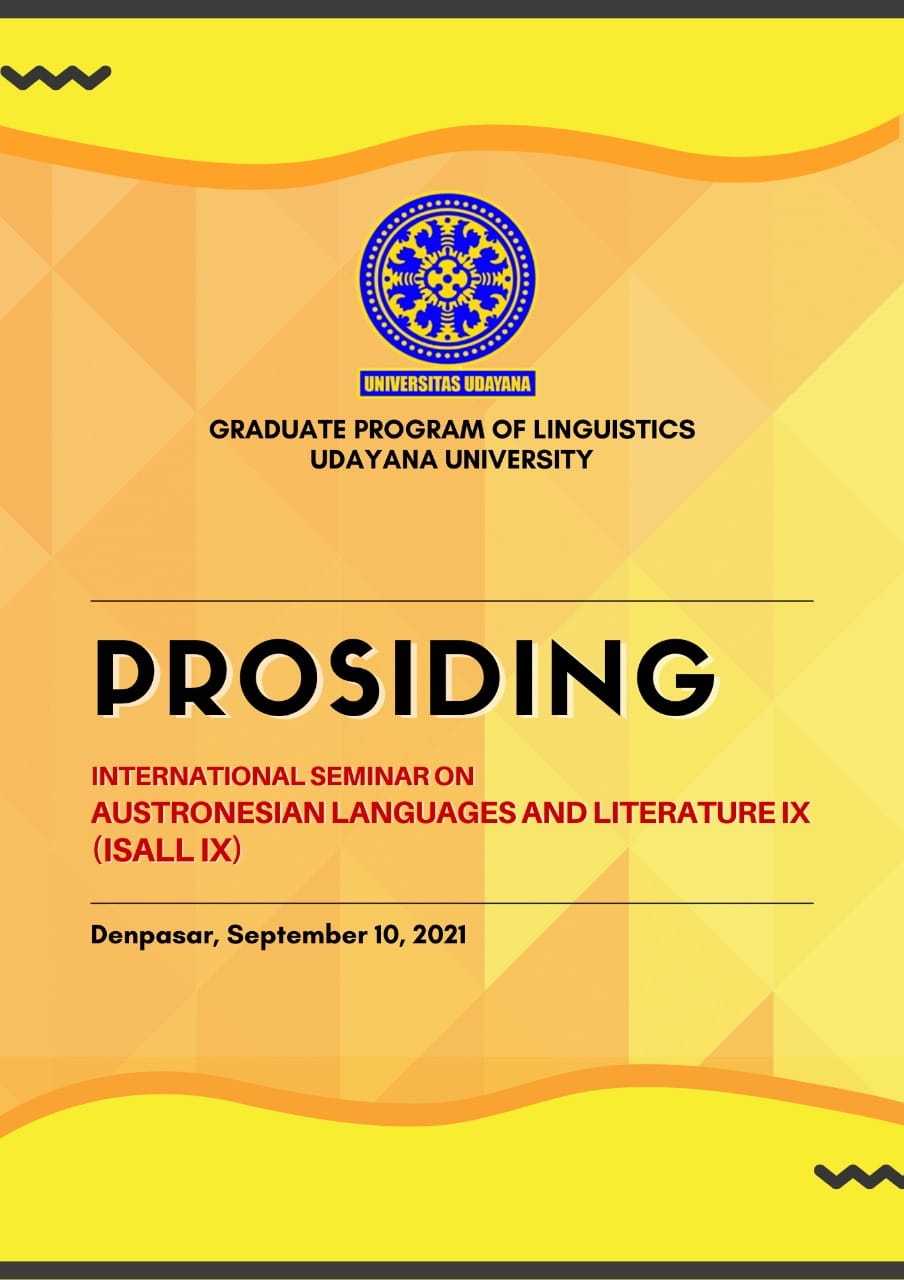Lexicon Pintar In Indonesian: A Study Of Natural Semantic Metalanguage
Abstract
This study is aimed to look at the structure and meaning components of knowledge-type state verbs in Indonesian. The data analysed in this study are the pintar, pandai, cerdas, cermat, cakap, cerdik, mahir, dan terampil. These lexicons were chosen because in the The Great Indonesian Dictionary or Kamus Besar Bahasa Indonesia (KBBI) it was found that the eight lexicons had vague and rotating meanings, making them very interesting for further analysis. To analyse the data, the method of reading notes and reviewing the literature was used, which was then presented descriptively. The results found in this study are that pintar, pandai, cerdas, cermat, cakap, cerdik, mahir, dan terampil have almost the same structure and semantic components. The difference lies in the level of ability or knowledge contained in each of these lexicons.
References
Goddard, C. 1996. Building a Universal Semantic Metalanguage: the Semantic Theory of Anna Wierzbicka‖. Goddard (Convenor). 1996. Cross-Linguistic Syntax from Semantic Point of View (NSM Approach). Australia: The Australian National University.
Sudipa, I Nengah. 2012. The Meaning of “Binding” Balinese Language: A Natural Semantic Metalanguage Approach 49-68. Denpasar: Journal of Balinese Studies
Wierzbicka, A. 1996c. The Syntax of Universal Semantic Primitives‖. Goddard (Convenor). 1996. Cross-Linguistic Syntax from a Semantic Point of View (NSM Approach), 6—23. Canberra: Australian National University.
Wierzbicka, A. 1996d. Semantics: Primes and Universals. Oxford: Oxford University Press.
https://kbbi.web.id


